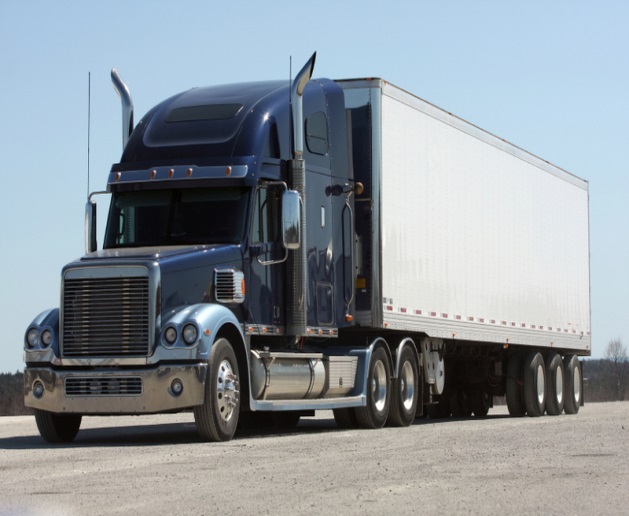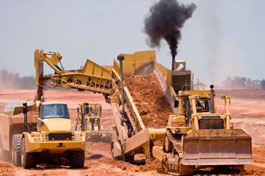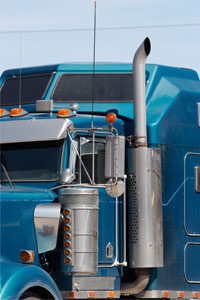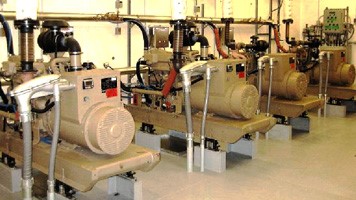Diesel fuel basics
What is diesel fuel?
Diesel fuel is the common term for the petroleum distillate fuel oil sold for use in motor vehicles that use the compression ignition engine named for its inventor, German engineer Rudolf Diesel. He patented his original design in 1892. Diesel fuel is refined from crude oil and from biomass materials.
Did you know?
One of the fuels that Rudolf Diesel originally considered for his engine was vegetable seed oil, an idea that eventually contributed to biodiesel production and use today.
Diesel fuel is made from crude oil
Diesel fuel is refined from crude oil at petroleum refineries. U.S. petroleum refineries produce an average of 11 to 12 gallons of diesel fuel from each 42-gallon (U.S.) barrel of crude oil.
Before 2006, most diesel fuel sold in the United States contained high quantities of sulfur. Sulfur in diesel fuel produces air pollution emissions that are harmful to human health. In 2006, the U.S. Environmental Protection Agency issued requirements to reduce the sulfur content of diesel fuel sold for use in the United States. The requirements were phased in over time, beginning with diesel fuel sold for vehicles used on roadways and eventually including all non-road diesel fuel. Diesel fuel now sold in the United States for on-highway use is ultra-low sulfur diesel (ULSD), which has a sulfur content of 15 parts per million or less. Most diesel fuel sold for off-highway (or non-road) use is also ULSD.
Diesel fuel has many uses
Most of the products we use are transported by trucks and trains with diesel engines, and most construction, farming, and military vehicles and equipment also have diesel engines. Some small trucks and cars also have diesel engines. Diesel fuel is also used in diesel engine generators to generate electricity, such as in remote villages in Alaska, among other locations around the world. Many industrial facilities, large buildings, institutional facilities, hospitals, and electric utilities have diesel generators for backup and emergency power supply.
Uses of diesel

Source: Stock photography (copyrighted)
The inventor of the diesel engine, Rudolf Diesel, originally designed his engine to use coal dust as fuel. He also experimented with vegetable oil before the petroleum industry began making petroleum diesel fuel. Most diesel fuel we use in the United States is refined from crude oil, but biomass-based diesel fuels made from vegetable oils and other biomass materials is now also common.
The first diesel engine automobile trip was completed on January 6, 1930. The nearly 800-mile trip was from Indianapolis, Indiana, to New York City. The trip demonstrated the potential value of the diesel engine design, which has been used in millions of vehicles since its inaugural trip.
Diesel fuel is important to the U.S. economy

Source: Stock photography (copyrighted)
Most of the products we use are transported by trucks and trains with diesel engines, and most construction, farming, and military vehicles and equipment also have diesel engines. As a transportation fuel, diesel fuel offers a wide range of performance, efficiency, and safety features. Diesel fuel also has a greater energy density than other liquid fuels, so it provides more useful energy per unit of volume.
In 2022, distillate fuel consumption by the U.S. transportation sector, which is essentially diesel fuel, was about 2.98 million barrels per day or about 125 million gallons per day. This amount accounted for about 75% of total U.S. distillate consumption, about 15% of total U.S. petroleum consumption. On an energy content basis (in British thermal units), diesel fuel accounted for about 23% of U.S. transportation energy consumption.
Diesel fuel is used for many tasks
Diesel engines in trucks, trains, boats, and barges help transport nearly all products people consume. Diesel fuel is commonly used in public buses and school buses.
Diesel fuel powers most of the farm and construction equipment in the United States. The construction industry also depends on the power diesel fuel provides. Diesel engines can do demanding construction work, such as lifting steel beams, digging foundations and trenches, drilling wells, paving roads, and moving soil safely and efficiently.
The U.S. military uses diesel fuel in tanks and trucks because diesel fuel is less flammable and less explosive than other fuels. Diesel engines are also less likely to stall than gasoline-fueled engines.
Diesel fuel is also used in diesel engine generators to generate electricity. Many industrial facilities, large buildings, institutional facilities, hospitals, and electric utilities have diesel generators for backup and emergency power supply. Most remote villages in Alaska use diesel generators as the primary source of electricity.
Diesel & the environment
Diesel fuel engines are getting cleaner
Diesel fuel (refined from crude oil) produces many harmful emissions when it is burned, and diesel-fueled vehicles are major sources of harmful pollutants such as ground-level ozone and particulate matter. To address this problem, the U.S. Environmental Protection Agency (EPA) established standards for the sulfur content of diesel fuel and for emissions from new diesel engines.

Source: Stock photography (copyrighted)
EPA fuel standards require a major reduction in the sulfur content of diesel fuels. To meet the EPA standards, the petroleum industry is producing Ultra Low Sulfur Diesel (ULSD) fuel, a cleaner-burning diesel fuel containing a maximum 15 parts-per-million (ppm) sulfur. Most of the diesel fuel now sold in the United States for use in vehicles is ULSD fuel.
The EPA also established emissions standards for diesel engine highway vehicles for model year 2007 and later. These engines are designed to operate only with ULSD fuel. Using ULSD fuel and advanced exhaust emission control systems can reduce vehicle particulate emissions by up to 90% and emissions of nitrogen compounds (NOx) by 25%–50%. ULSD fuel helps reduce emissions in older engines as well.
Even with these advances, diesel fuel still contributes to air pollution in the United States because it will take a long time for newer and cleaner diesel vehicles to replace older vehicles.
Carbon dioxide emissions
The U.S. Energy Information Administration estimates that in 2022, diesel (distillate) fuel consumption in the U.S. transportation sector resulted in the emission of about 457 million metric tons of carbon dioxide (CO2), a greenhouse gas. This amount was equal to about 25% of total U.S. transportation sector CO2 emissions and equal to about 9% of total U.S. energy-related CO2 emissions in 2022.



